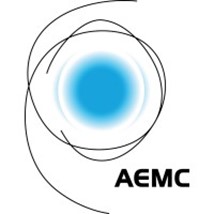IPWEA recently made a submission to the Australian Energy Markets Commission (AEMC) calling for reform of the approach to the metering of street lighting (copy available here). The changes being called for by IPWEA and others would enable councils and main road authorities to secure energy savings from smart street lighting controls.

The AEMC, which sets the rules for the National Electricity Market (NEM), has been consulting with stakeholders on possible changes to the metering approach that would recognise the metering capabilities of devices like smart street lighting controls. Such changes would allow councils and main road authorities to benefit financially from the energy savings if they dim, trimming and enable constant light output controls on LED street lights.
IPWEA’s submission has been supported by Local Government NSW and the Australian Smart Communities Association as well as a number of regional council groupings, individual councils, road authorities and equipment suppliers.
The submission argues that there is a broad and compelling public benefits case to introduce a simple, effective and efficient regime that recognises the metering capabilities of smart street lighting controls and encourages their widespread adoption across some 2.5 million street lights and other similar smart city devices.
Such reform would not only greatly improve metering accuracy in this largely unmetered segment of the electricity market but also deliver energy savings, maintenance savings, road and public safety improvements, a range of environmental gains and many other benefits.
IPWEA noted in its submission that the business case for smart street lighting controls is substantially influenced by the energy savings that smart street lighting controls can deliver. These savings account for perhaps 45-60% of the easily realisable financial benefit. However, securing these savings is contingent on having a regulatory approach that is able to readily recognise the variable electricity consumption data that they produce. The current absence of such a system in the NEM has hampered adoption of smart street lighting controls in Australia thus far in comparison to many international peers.
There is now solid precedent internationally for recognising the metering capabilities of smart street lighting controls. Such reforms have been a key enabler of widespread adoption in markets such as the United Kingdom, parts the United States and in New Zealand.
A key feature of successful regulatory reforms elsewhere is that they have adopted a streamlined version of their metering regime to apply to smart street lighting controls, setting aside or modifying aspects of their regimes that are not relevant to the nature of the small loads being measured.
IPWEA therefore welcomed proposals to set-aside a number of aspects of the current NEM metering approach and suggested that further consideration should be given to other aspects that may not be relevant, necessary or could inadvertently impose unreasonable, complex and costly requirements on a Minor Energy Flow Metering approach that would discourage widespread adoption.
Put simply, if it costs even a few dollars a year to meter a street light using $15-$150 of electricity a year, there will be little take-up and a significant lost opportunity to materially improve metering of these currently unmetered devices and help deliver a wide array of other broader public benefits that smart street lighting controls offer.














